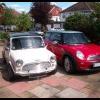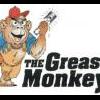Unfortunately the BMC/BL merger/take overs of independent British car companies like Austin with Morris, Woleseley, Riley, Triumph then later Rover, etc were not followed by enough rationlisation so unlike Ford there were many models of similar cars and different engines all competing against each other for many years adding to costs and overheads.
Ford invented the assembly line/car mass production and would never have had a Triumph 2000 competing against a Rover 2000 (both with different 2.0L engines!) or allowed competing design teams within the same company to produce a Triumph V8 engine for the Stag when they also had a suitable Rover V8 engine (which many owners later swapped to the Rover engine for reliability!)
Then there was MGB v Triumph Spitfire sports cars and many more.........

There was that interesting article in Jan/Feb 2010 Miniworld magazine by Leslie Palmer who in 1969 became BL's first non-clerical, salaried female employee aged 22 taken on as a graduate management trainee to investigate new methods of working.
She gives several examples of finding management not really knowing if cars such as Coopers or Healeys were actually making a loss and relates how she discovered the Mini 850 was being sold cheaper than the 1000cc even though for 2 or 3 years it had cost more to manufacture its engine because the volume point meant having them specifically engineered. Customers who bought the cars expected smaller to be cheaper but it wasn't the case............
She later needed the basic totals of cars produced and sold each week to make sales projections, etc. Before computerisation this was worked out by hand on a paper spreadsheet. What was built on plant versus what was out at the dealerships and what was sold proved impossible to find out as there was a discrepancy of at least 20% a month. No one knew exactly where all the cars were or how many there were. She found the guy responsible for the figures only to find this had been the case for 12 years! It seems every Friday night a man went out with a torch and wandered round the Longbridge plant counting cars. It turned out the cars were being moved around to make space for more, the paperwork stuck to windscreens often got blown away and once lost mean't the now unidentified cars stood for months on end effectively lost in the system (or lack of one). She says that before 1969 the volumes of Minis, etc, produced were still small enough to keep control of with the old system but from 1969 until about 1978 the explosion in volume plus labour disputes, supplier disputes and lack of enough car parking, along with the workers holidays coinciding with the August registration suffix sales boom compounded the problems.
She goes on to say the Mini Coopers never made money due to the low volumes with high cost of many non-standard parts fitted and that the price premium made it less desirable as a new car but very popular as a secondhand model. The 1275GT replacement was however highly profitable due to mainly using standard parts but John Cooper would not compromise on this, she insists it was this rather than his £2 per car payment that caused the Coopers to be discontinued by BL. "There were huge arguments as the Cooper was a very popular model internally with staff, but the Cooper wasn't selling enough. The 1275GT made money the Cooper didn't."
Edited by mab01uk, 09 May 2011 - 06:28 PM.





















